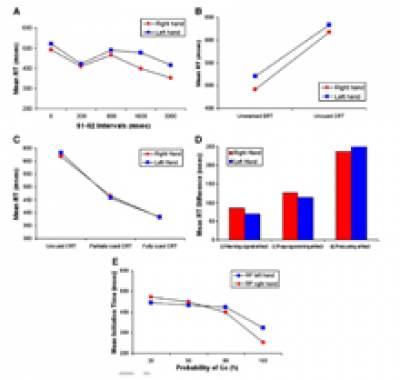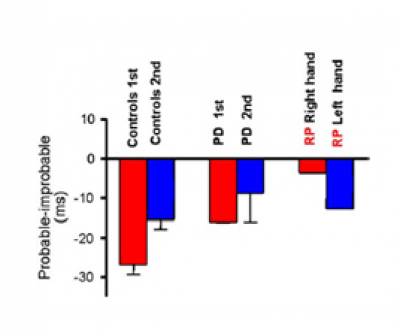Cognitive-Motor Neuroscience Group
Lab Head: Professor Marjan Jahanshahi
Procedural learning involves acquisition of a skill through repeated performance and practice. The basal ganglia are considered the substrates of some forms of procedural learning. We have shown that patients with Parkinson’s disease (PD) have deficits in specific types of implicit procedural learning (eg serial reaction time task) but not others (eg complex dynamic systems control). On other tasks of procedural learning such as the Weather Prediction Task,(WPT) we have demonstrated that the observed deficits in PD patients tested on medication may be partly due to a dopamine overdose effect. Using 11C-raclopride PET we have found significantly greater dopamine release in the ventral striatum in the WPT when learning is achieved through trial and error feedback than with a paired associate format (Tai et al, In preparation).
Examples of relevant publications
Soliveri P Brown RG Jahanshahi M Caraceni R Marsden CD (1997) Learning manual pursuit tracking skills in patients with Parkinson’s disease. Brain, 120, 1325-1337.
Wilkinson L Jahanshahi M (2007) The striatum and probabilistic implicit sequence learning. Brain Res. 1137, 117-130.
Wilkinson L, Lagnado, DA, Quallo, M, Jahanshahi M (2008) The effect of feedback on non-motor probabilistic classification learning in Parkinson’s Disease. Neuropsychologia, 46 2683–95
Osman M, Wilkinson L, Beigi M, Sanchez Castaneda C, Jahanshahi M (2008) Patients with Parkinson’s disease learn to control complex systems via procedural as well as non-procedural learning. Neuropsychologia, 46: 2355–2363.
JA Obeso, M Jahanshahi, L Alvarez, R Macias , I Pedroso, L Wilkinson , N Pavon, B Day, S Pinto, MC Rodríguez-Oroz, J Tejeiro, J Artieda , P Talelli, O Swayne, L. R Rodríguez, K Bhatia, M Rodriguez- Diaz, Lopez G, J Guridi, JC Rothwell What can man do without basal ganglia-cortical motor output? The effect of combined unilateral subthalamomoty and pallidotomy in a patient with Parkinson’s Disease. Experimental Neurology, Sep 8 2009, epub
Wilkinson L, Teo JT, Obeso I, Rothwell JC, Jahanshahi M Contributions of primary motor cortex and supplementary motor area are essential for probabilistic implicit sequence learning: evidence from theta burst magnetic stimulation. J Cognitive Neuroscience, 2010 Mar;22(3):427-36.
Jahanshahi M, Wilkinson L, Gahir H, Dharminda A, Lagnado DA Medication Impairs Probabilistic Classification Learning in Parkinson’s Disease, Neuropsychologia, 2010 1096–1103.
Obeso et al (2009) Exp Neurol.Dec;220(2):283-92
 |  |
 Close
Close

